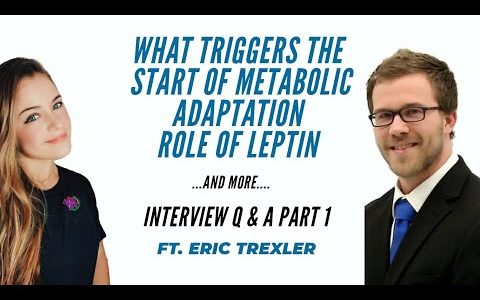Faculty- AYANTIKA BHATTACHARYA (M.Sc ANTHROPOLOGY)
Call/WhatsApp: 8013948974 OR 8240473823
Join our Facebook group “ANTHROPOLOGY OPTIONAL”:
https://www.facebook.com/groups/356404095778564/
Join our Telegram Channel for daily updates and FREE study notes for WBCS and other WBPSC exams: https://t.me/gyaanpeethacademy
অয়ন্তিকা ম্যামের আন্থ্রপলজি
Ayantika madam anthropology
#AnthropologyOptional #HumanGrowth #BooklistForWBCS #TargetBatch #WBCS2021 #Strategy #PaidBatch #Motivation
Introducing anthropology: Meaning and scope of anthropology.
Major branches of anthropology:
1.1 Main branches of Anthropology, scope and relevance :
(a) Social-cultural Anthropology,
(b) Biological Anthropology,
(c) Archaeological Anthropology,
(d) Linguistic Anthropology.
1.2 Enlightenment. Colonialism and anthropology.
2. Human evolution and Hominization process :
2.1 Theories of organic evolution. Human evolution and the emergence of Man :
(a) Biological and Cultural factors in human evolution,
(b) Theories of Organic Evolution (Pre-Darwinian, Darwinian and Post-Darwinian),
(c) Synthetic theory of evolution; Brief outline of terms and concepts of evolutionary biology.
2.2 Neutral theory of molecular evolution.
2.3 Concept of evolutionary biology: Skeletal changes, (skull, vertebral column, pelvic girdle, hind limb).
2.4 Characteristics of primates, Primate classification (general), Features and distribution of New
World Monkey, Old World Monkey, Asian and African apes.
2.5 Theories of human origin.
2.6 Geological time scale with special reference to Pleistocene epoch.
2.7 Distribution, characteristics and phylogenetic status :
(a) Parapithecus
(b) Dryopithecus, Sivapithecus
(c) Australopithecus africanus, Australopithecus afarensis, Homo habilis
(d) Homo erectus (Java Man, Peking Man)
(e) Archaic Homo sapiens
(f) Neanderthal Man – La-chapelle-Aux-Saints, Tabun Man
(g) Anatomically Modern Homo sapiens – Cromagnon, Grimaldi, Chancelade
3. Human Genetics :
3.1 Methods – Mendelism, Twin-study, Cytogenetics, Population genetics.
3.2 Biological basis of inheritance: DNA structure and replication, Restriction Fragment Length
Polymorphism (RFLP), Variable Number of Tandem Repeat(s) (VNTRs), Short Tandem Repeat(s) (STRs)
protein synthesis, gene, allele, cell division.
3.3 Concept of Human Genome: nuclear genome, mitochondrial genome, Chromosome and
chromosomal aberrations in man (Numerical and structural aberrations, point mutation), Satellite DNA.
3.4 Patterns of inheritance – autosomal, sex-chromosomal, multifactorial, polygenic, sex
determination, sex influenced
3.5 Application of human genetics – consanguinity, inbreeding, genetic load, genetic counselling,
forensic anthropology, personal identification, paternity identification, DNA fingerprinting,
dermatoglyphics.
4. Human variation :
4.1 Concept of Race, racism.
4.2 Basis of variation – Morphological (hair, eye) metric (stature, head shape), Polymorphic (genetic
marker) – blood group (ABO, Rh), Hb, PGM, HP, Y-chromosome STR, mtDNA.
4.3 Concept of Human physique and somatotype.
4.4 Concept of ethnic groups – Mongoloid, Caucasoid, Negroid, Australoid.
5. Human Growth and Nutrition :
5.1 Concept of human growth, stages of growth – Pre-natal, Post-natal, Adolescent.
5.2 Factors affecting growth and development – genetic, environmental, nutritional, socioeconomic.
5.3 Methodology of growth study.
6. Concept of Health and disease :
6.1 Concept of Communicable and Non-Communicable diseases. (Malaria and Type-2 diabetes
respectively). Nutrition Deficiency related diseases.
6.2 Nutrition – Macro and Micronutrients and Deficiency.
7. Human adaptation :
7.1 Concept of Human adaptation and acclimatization – hot, cold and high altitude. Bergman’s and
Allen’s Rules.
7.2 Anthropometry and its uses in understanding human adaptation (BMI and CI), Physiological
variable (blood pressure, pulse rate), Body composition (fat patterning).
8. Cultural evolution :
9. Theories and concept of culture and society :
9.1 Anthropological Theories: Evolutionism, Diffusionism, Functionalism, Structuralism, Symbolism and Interpretative Approach, Post-structuralism and Post-modernism –
Hermeneutics and Phenomenological Anthropology.
9.2 Social structure, Social organization, Gender, Institution, Group,
Community.
10. Culture and civilization :
11. Elements of social organization: Family & Marriage
Anthropology UPSC WBCS Optional Anthropology Strategy WBCS 2021 strategy Gargi Das wbcs social anthropology biology anthropology previous year questions strategy for anthropology lectures for ias anthropology optional notes for wbcs anthropology optional upsc booklist anthropology optional wbcs class anthropology in hindi anthropology optional wbcs bengali anthropology optional wbcs book list anthropology book list for upsc anthropology optional upsc lecture anthropology strategy for upsc
wbcs preparation wbcs 2021 wbcs 2021 preparation wbcs 2021 preliminary exam date wbcs preparation 2021
source



